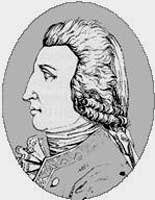

Italian composer. His early music training was from his father, a barber and amateur violinist In Burano, near Venice. Benedetto Marcello supposedly recommended him as a pupil to Antonio Lotti; with the latter the youth studied counterpoint, harmony, and keyboard playing. Possibly his first professional appointment was in Florence, where by 1726 he was a theater harpsichordist. From 1728 he was composing operas, collaborating with Giovanni Battista Pescetti. In 1740 he became maestro di musica at the Ospedale dei mendicanti. After two years in London (1741-43), where he composed serious operas for the Haymarket Theatre, he returned to Venice, where he began composing Neapolitan-style opere buffe, mostly to librettos by Carlo Goldoni. In 1748 he received the post of vice-maestro at St. Mark's; in 1762 he became maestro, and the same year he was appointed director of the Ospedale degli incurabili. He spent three years at Cathenne the Great's court in St. Petersburg (1765-68), where he composed sacred works on Russian texts. On returning to Venice in 1768 he was made choirmaster at the Ospedale. He composed more than 100 stage works; the most popular were Il conte Caramella (1749), Il mondo della Irma (1750), Il filosofo di campagna (1754), L'amante di tutte (1760), and Il marchese villano (1762). He also composed nineteen known cantatas, nearly thirty oratorios, many liturgical works, and some ninety keyboard sonatas.